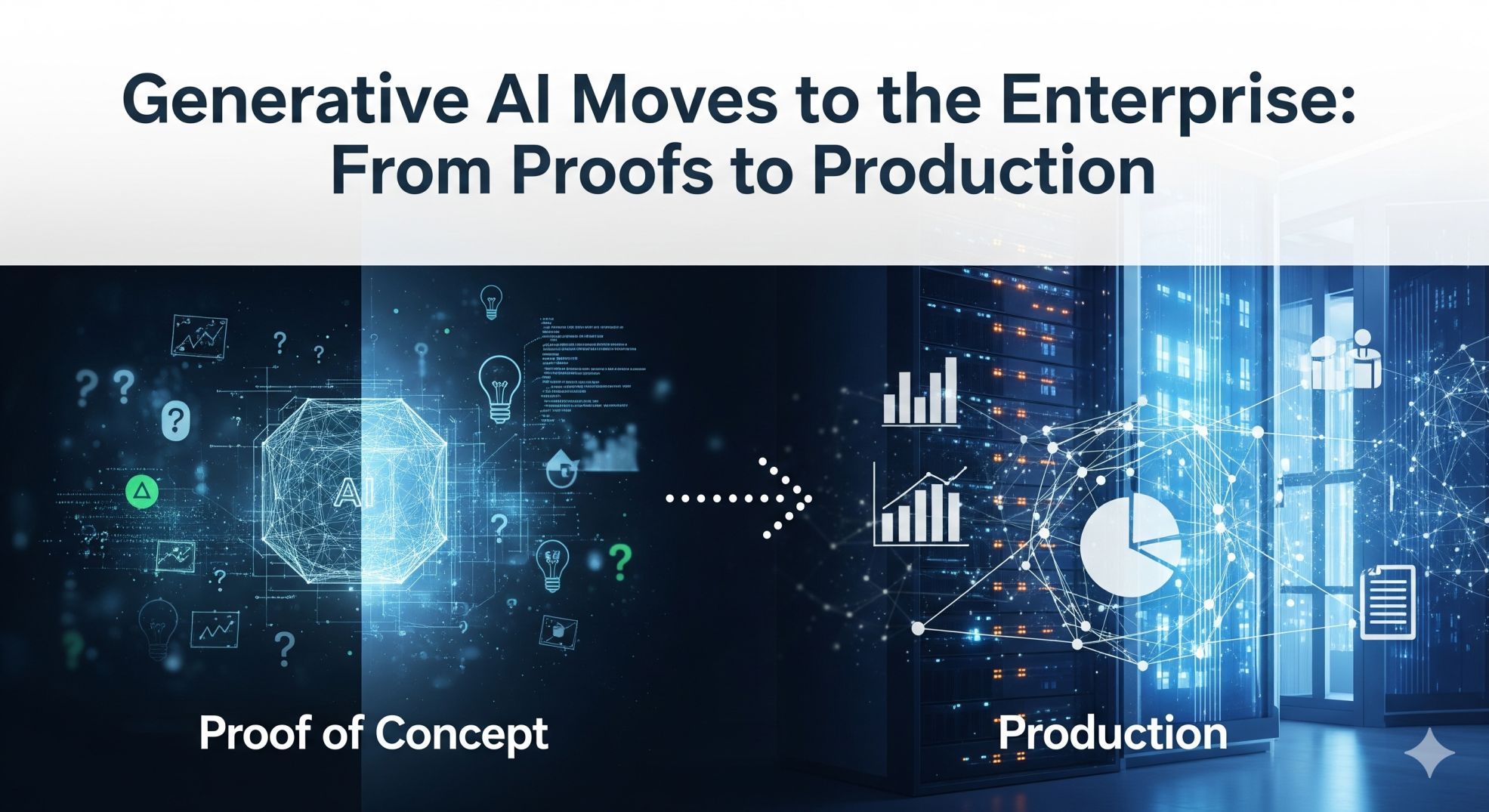San Francisco — Across industries, generative artificial intelligence is transitioning from experimental pilots to mission-critical production systems, forcing companies to rethink product architecture, talent models and risk controls. What began as proof-of-concept chatbots and demo-grade assistants has, in many firms, matured into embedded workflow tools that touch customer service, knowledge management, coding, and content generation — and with that maturation come fresh technical and governance demands.
Enterprises report that the initial performance gains from large pre-trained models are now table stakes; the competitive edge lies in how organisations operationalise those models. Firms are standardising retrieval-augmented generation (RAG) pipelines to ground model outputs in company data, adopting fine-tuning and parameter-efficient adaptation to align base models with proprietary workflows, and investing in observability stacks to monitor drift, hallucinations and latency. The shift to production also highlights previously underappreciated costs: compute budgets for continuous retraining, vector-store maintenance, and the human-in-the-loop processes that validate model outputs at scale.
The operationalisation wave has spawned a new set of specialist roles — prompt engineers, MLOps engineers, model reliability engineers — and renewed focus on platform engineering. Cross-functional teams now build layered systems where a smaller, fast on-device model handles classification and routing, while larger cloud-hosted models provide complex generative responses. That hybrid architectural pattern helps balance latency, cost and privacy requirements, but increases system complexity and the potential for integration failures.
Security and compliance are central to enterprise deployments. Organisations are implementing provenance tracking for training data, access controls for model invocation, and audit trails for sensitive outputs. Legal and compliance teams are demanding contractual guarantees and clearer vendor SLAs, while internal product teams design fallback mechanisms to prevent flawed or harmful responses from reaching customers. For many regulated sectors — finance, healthcare, and public services — these safeguards are not optional; they shape product roadmaps and time-to-market.
Adoption dynamics also reflect a bifurcation in the vendor landscape. Major cloud providers and a few well-capitalised model developers offer end-to-end platforms that appeal to large enterprises seeking consolidation. Meanwhile, a thriving ecosystem of niche vendors provides verticalized solutions and tooling that accelerate specific use cases, from contract review to creative ideation. Customers report that the better ROI projects are those with clearly defined inputs, measurable KPIs and human oversight baked into the process.
As generative AI becomes an operational staple, executives are grappling with the human and organisational implications. Automation will change job descriptions, but companies that combine AI with reskilling programs and redesign work around augmented human–AI collaboration are seeing the best outcomes. The enterprise moment for generative AI is less about the next model release and more about disciplined engineering, governance and aligning deployment to tangible business value.










